
Howdy, pilgrim! You're in volume 0.51 of the ^zhurnal — see ZhurnalyWiki on zhurnaly.com for a parallel "live" Wiki edition; see Zhurnal and Zhurnaly for quick clues as to what this is all about. (Briefly: it's the journal of ^z = Mark Zimmermann ... previous volume = 0.50 ... complete list at bottom of page ... send comments & suggestions to "z (at) his (dot) com" ... tnx!)
Almost seven years ago something like a flame war broke out in an online forum which I felt somewhat responsible for – the forum, that is, not the flame war! In an attempt to lower the temperature of the conversation I quoted from Part I, Chapter 1 of Peter Senge's The Fifth Discipline: The Art and Practice of The Learning Organization, where the author contrasts discussion and dialogue:
The discipline of team learning starts with "dialogue," the capacity of members of a team to suspend assumptions and to enter into a genuine "thinking together." To the Greeks dia-logos meant a free-flowing of meaning through a group, allowing the group to discover insights not attainable individually. Interestingly, the practice of dialogue has been preserved in many "primitive" cultures, such as that of the American Indian, but it has been almost completely lost to modern society. Today, the principles and practices of dialogue are being rediscovered and put into a contemporary context. (Dialogue differs from the more common "discussion," which has its roots with "percussion" and "concussion," literally a heaving of ideas back and forth in a winner-takes-all competition.)
Since it was then a Friday, I proposed "a few modest experiments":
I concluded:
Robert Nozick in the intro to his book Philosophical Explanations talks about how philosophers classically enjoy knock-down drag-out arguments, as they try to "demolish" their opponents' positions ... and how, typically, each generation thinks that it has "won" the "battle" and "defeated" its predecessors. In contrast, Nozick proposes only to offer plausible explanations of things (e.g., "why is there something rather than nothing", "what is the nature of the good", etc.) for consideration.
Perhaps that gentle approach is worth a try in many other circumstances. In the long run, it may be far more persuasive than argumentation with big guns drawn up on each side ...
(cf. Education Versus Eduction (30 Apr 1999), Learning From Adversity (15 Sep 1999), Cardinal Newman (4 Oct 2001), Universal Flourishing (25 Dec 2001), Robert Nozick (2 Feb 2002), Stoic Struggles (22 Dec 2002), ...)
- Saturday, January 07, 2006 at 05:32:36 (EST)
An idea that has doubtless occurred to many people many times (but Paulette & I came up with it independently some months ago): a bumper-sticker or poster showing a dynamic expanding/exploding cerebral cortex, above the caption:
| This is Your Brain on Books! |
(cf. Boston Public Library (20 Jun 2002), Got Library (17 Sep 2003), Extra Curricular (11 Feb 2005), ...)
- Friday, January 06, 2006 at 05:48:02 (EST)
At the first race of the year the Montgomery County Road Runners Club assigns bib numbers to runners. I arrive early and there's nobody else waiting, so the nice volunteer at the desk lets me pick. For 2006, I'm # 333 — suggesting a nom de trail of "Half Beast", as Comrade C-C dubs me. Pilgrim ^z's progress log during the past month consists of only 7 noteworthy expeditions for a total of ~60 miles:
Jingle Bell Jog
11 Dec 2005 - ~5 miles, ~10:30 pace — After I spend two weeks coughing, sneezing, sniffling, and otherwise suffering from a bad cold — and not attempting one step of jogging — today's 8k MCRRC race is amazingly comfortable. Comrade Ken Swab and I arrive early and visit with fellow runner-friends. Temperatures are near freezing, ideal weather from my perspective. We set a steady back-of-the-pack pace, walking for one minute every mile or so, which leaves enough reserve energy to sprint up the final hill. I have a coughing fit about once every 10 minutes. As usual, a few yards from the finish line Ken and I get into an argument over who has precedence; if not for that we might have come in slightly under 52 minutes. After the race everybody who stays around wins some cool loot in the Club year-end drawing. Ken's birthday is tomorrow and he takes home a great windbreaker. I snag a Rock Creek Park Marathon technical shirt.
Icy Patches
17 Dec 2005 - 16+ miles, ~12:30 pace — [1] = ^z DC/MD Urban Loop East: from home through Walter Reed Annex to Rock Creek Trail, south on Beach Drive to the Rock Creek Park Police Headquarters, east on Military Road/Missouri Ave/Riggs Road to Sligo Creek Trail near East-West Highway, northwest along Sligo under the Capital Beltway, and then home again via Forest Glen Road. It sounds complex but it's actually quite a nice route with a pleasant mix of city and woodsy scenery. The people I greet are uniformly friendly; one lady suggests that I'm Santa Claus in training for Christmas delivery work. Along the way I pick up three gloves and a small cap from among the bus-stop litter.
At noon as I set out the weather is comfortably crisp, sunny and in the mid-40's, but as the afternoon and the miles go by clouds move in and temperatures dip. Ice blankets occasional trail segments, but I tread carefully and avoid a fall. The first six miles flow by at a sub-12:00 pace and a 2:1::jog:walk ratio, but then I start to flag. About mile 12 I'm feeling seriously tired, probably due to mild dehydration, loss of salt, and low blood sugar. There are no water fountains in DC or PG County, seemingly, and today I'm too cheap to stop at a gas station or pharmacy or liquor store to buy a drink. I carry a pint of Gatorade mix in a hand-held bottle, but one sip every quarter hour isn't sufficient. So two hours into the jog I take a Succeed! electrolyte capsule and start sucking on a hard sugar candy that I've had in my pouch since last February's marathon. That seems to help, though I still must cut my pace to about 13:00 minutes/mile (1:1::jog:walk). As the three-hour mark approaches I'm entirely out of water but have reached familiar terrain near my home neighborhood. I start feeling chipper again and trot most of the final miles home.
Scott Reiss, musician and family friend, suffered from depression and died by his own hand last Wednesday. I thought of him frequently during today's run, especially on the icy patches.
Recce Run
24 Dec 2005 - 11+ miles, ~11:45 pace — On Saturday morning Comrade Ruth and I meet at the Greenbelt Youth Center and preview the George Washington's Birthday Marathon by doing one major loop around the course. Temperatures are near-freezing as we start but soon warm into the lower-40's. Both Ruth and I carry newish GPS units and have a good time messing with them en route. We first walk to the finish line and take latitude-longitude coordinates there, then stroll to the starting line and do likewise.
Then we're off, chatting as we jog about a variety of themes with the main focus on past running experiences. Our first few miles flow by too quickly, but soon we increase the frequency of walk breaks and settle in to a more sustainable pace. Our splits for the first nine miles are 11:05, 10:57, 12:21, 11:29, 11:13, 11:48, 11:29, 12:02, and 13:12 — that final slow segment including some significantly rising terrain along Powder Mill Road. I take waypoints at each course marker: [start] [1] [2] [turnaround] [3] [4] [5] [6] [7] [8] [9] [finish]
Shots at a nearby target range intermittently disturb the peace, as do cars that zip past and force us to the shoulder of the road. Hundreds of geese feed on an open field in the agricultural research center. I get too warm and doff my outer windshirt, exposing a Boston baseball jersey that perhaps provokes at least one passer-by to honk, though whether s/he's pro or con the Red Sox remains uncertain. Ruth and I each swallow a "Succeed!" electrolyte capsule at the one-hour point, and neither of us suffer from any leg cramps. At the end of our first lap sanity prevails and we decide not to attempt a second.
Ruth is sharp-eyed: along the way she spies a shiny-steel 1/2-inch wrench, a brightly-plumed but recently-deceased woodpecker, and a fine-quality sewn-leather glove. We pick up two out of three — guess which two! (^_^)
Winter Wardrobe
26 Dec 2005 - 14+ miles, ~11:20 pace — Inspired by sunlight glistening on bare tree branches in Rock Creek Park, I compose a haiku as I jog this morning (cf. Winter Wardrobe). After yesterday's rains the temperature settles into the mid-40s but feels much cooler with intermittent wind gusts of up to 30 mph. I dither before setting out and eventually decide to leave my camera and GPS behind — probably a wise choice, since I have enough trouble as it is juggling my bottle of Gatorade when I take items out of my fanny pack.
My intention is to do a ~15 mile [Northwestern DC Loop] — southbound on Rock Creek Trail and Beach Drive to the Park Police Hqs., westerly on Military/Western/River Roads, and then homewards via the Capital Crescent Trail — but I turn the wrong way as I leave my neighborhood and belatedly discover that by taking the Georgetown Branch I've cut off a mile from the course. That inadvertent shortcut turns out for the best, however, as a blister begins to develop on the bottom of my right foot after a dozen miles. Earlier in the journey my legs start to get chafed from a seam on my shorts. I consider experimenting with wearing the shorts inside-out, or perhaps backwards, but refrain since I'm next to busy River Road in Bethesda. So I run bowlegged and eventually the cold air numbs my inner thighs.
My pace is as brisk as the weather. The first five measured miles flow past at ~11:15 min/mi. At the one-hour mark I take an S! electrolyte cap. I slow a bit on the DC sidewalks and at occasional traffic lights. But when I arrive at the CCT with five miles to go I'm energized by three hard candies and a Clif Shot. I finish with splits of 10:33, 11:57, 10:06, 11:55, and 11:35 for an average again of ~11:15. It is not a coincidence that lady runners pass me during both of the sub-11 minute miles.
Cabin John Trail (South)
28 Dec 2005 - 5+ miles, ~14:30 pace — The pace might seem torpid, but Ruth and I find the hills of Cabin John Stream Valley Park challenging, to put it politely. At 2:30pm we meet at Cabin John Local Park, just off Macarthur Blvd. near the high one-lane bridge over Cabin John Parkway. I dither but finally decide to leave my camera behind, a wise choice given the stressful path ahead. We descend dizzying stairs from the playground to the creek and I take the lead, proceeding upstream at much too fast a rate for the first mile. Then reality ushers in some extended walk breaks, particularly as we climb the steep slopes.
I turn an ankle once, and Ruth gets a wet foot at a tributary crossing, but we fortunately avoid slip-sliding on the muddy leaf-covered inclines, and likewise manage not to trip over roots or rocks. Ruth's GPS concurs with the county map [15] on the 2.6 mile distance to River Road, where we turn around after 36 minutes. During the return journey, led mostly by Ruth, we discover a couple of trail segments that we had missed in our outbound trip and follow them, so our route is slightly longer. We see few other people on the trail until near the end, when we find a crew of quiet paintball-warriors apparently making preparations for battle.
At the final climb Ruth and I stare at the cascade of stairs and ask, "What would Evan do?" We concur that neither of us is Evan, however, so we don't leap gazelle-like to the finish line. The hill work along the way is ample. When I get home I retire the fluorescent-pink nylon shorts I was wearing. They've served honorably in my first several marathons, but now the inside elastic lining is shot and they have a tendency to, shall we say, induce discomfort ...
New Year's Resolution 5k
1 Jan 2006 - 3+ miles, ~8:55 pace — A New Year brings a new MCRRC low-key club road race. A few hundred people show up on Sunday morning to run, and since I haven't done anything for the past three days I "let myself go" and discover that, happily, I'm only ~1 minute/mile slower than I was a year ago.
The competition begins and ends at a spiffy fitness club with mirrored walls and ranks of high-tech exercise machines, most of functionality incomprehensible to me. Pre-event chats include Way-No (wearing a hard boot to protect his stress-fractured foot), Ruth (suffering from still-unexplained internal mid-body pains), C-C (recovering from a cracked shinbone two months back, and from exercise-induced uticaria two days ago), and me (nursing the ankle I twisted on the trail Wednesday). Luckily we don't run for the physical health benefits — we do it to improve our minds, eh?! (^_^)
Ruth and C-C introduce me to Gayatri, who plans to run the Mumbai Marathon in two weeks. After today's 5k we talk about Bollywood movies, and my feeble knowledge seems to impress her (I mention Amitabh Bachchan, Hrithik Roshan, and Shah Rukh Khan — analogous to having heard of Humphrey Bogart, James Dean, and John Wayne). When Gayatri says that the Mumbai race will probably take place at ~90°F temperatures I insist on giving her four Succeed! electrolyte capsules to carry halfway around the globe, in case of need.
As for today's race itself, I'm surprised at how smoothly it for me goes in spite of poor pacing. I cross the starting line ~10 seconds after the metaphorical gun and proceed to clip the first mile in 8:39, the second in a more sustainable 8:52, and the third at an embarrassing 9:17 including an ignonimous walk up one hill. I finish behind 79 men and 39 women, 11th of 18 in my age/sex group — alas, no top-ten points for me today. But the ankle feels all right, Ruth sets a Personal Record for the distance, and C-C finishes smartly and with good form in her first race after a multi-month hiatus. Good news for all!
Mount Vernon Trail
2 Jan 2006 - 5+ miles, ~10:30 pace — A little after 8am on this Monday holiday Comrade Evan and I rendezvous in downtown Alexandria and point our toes south toward the Mount Vernon Trail. The miles commence to flow by far faster than I expect. Could the near-freezing weather, the sporadic light rain, the pleasant natural scenery, and the excellent conversation be conspiring to speed me along? Or has yesterday's blitz 5k recalibrated my legs' default turnover? For whatever reason we find ourselves at MVT milepost 8 after roughly 10 minutes. Then markers 7 and 6 swim into our ken after a brisk 10:45 and 10:25 respectively. I capture GPS coordinates for the landmarks; see the map with clickable pushpins at [DC Metro Area Trails].
Shortly after post #6 I turn back. Speedy young Evan continues south, to blast out and back an extra pair of sub-8s. Without witnesses I do a solo mile in a startling-for-me 9:30. Astounded by that readout I start taking longer walk breaks. As my hands become overheated an unmentionable part of the male anatomy now starts to feel frostbite. I take my gloves off and attempt to stuff them into my shorts for added insulation, but the gloves fall through to the trail whenever I try to run again. Alas, there's far too much traffic on the George Washington Parkway and on the MVT itself for me to do anything other than suffer, or risk arrest for public indecency. Wary of Commonwealth of Virginia law enforcement, I choose to suffer.
After finishing my fifth mile in 10:55 I commence an extended cooldown stroll until Evan rematerializes and pushes me back up to speed for a final sprint to our cars. There we part ways, as I drive along the southwestern border of Alexandria and locate six more Dc Boundary Stones — markers placed at one-mile intervals during the 1791-92 survey which established the Federal City. See my [Google map] of the stones, with clickable thumbnail photos and GPS coordinates.
(cf. September 2005 Jog Log (30 Sep 2005), Golden Trump (16 Oct 2005), Late October 2005 Jog Log (30 Oct 2005), Three Mooseketeers (1 Dec 2005)...)
- Wednesday, January 04, 2006 at 06:03:00 (EST)
A large printed sign seen in the cooking area of a local pizza parlor:
| Caution! Oven +/- 500° |
Hmmm ... if it's -500°F then it's well below absolute zero, −459.67°F – which definitely makes it an artifact to be cautious about!
(cf. Warning Signs (22 Jan 2002), Crude Metrics (9 Feb 2003), Bumper Sticker Optics (9 Jun 2003), Newsworthy Mathematics (18 Jun 2004), ...)
- Monday, January 02, 2006 at 15:07:18 (EST)
As part of their obligatory stuck-on-fast-forward depiction of a future techno-society, certain cyberpunk stories succeed in conjuring memorable images of virtual worlds. Stuck in my mind for more than a decade now, from the beginning of Chapter 3 in William Gibson's 1984 novel Neuromancer:
Home.
Home was BAMA, the Sprawl, the Boston-Atlanta Metropolitan Axis.
Program a map to display frequency of data exchange, every thousand megabytes a single pixel on a very large screen. Manhattan and Atlanta burn solid white. Then they start to pulse, the rate of traffic threatening to overload your simulation. Your map is about to go nova. Cool it down. Up your scale. Each pixel a million megabytes. At a hundred million megabytes per second, you begin to make out certain blocks in midtown Manhattan, outlines of hundred-year-old industrial parks ringing the old core of Atlanta ...
... and later in that same chapter, a graphic depiction of the infosphere itself:
A gray disk, the color of Chiba sky.
Now—
Disk beginning to rotate, faster, becoming a sphere of paler gray. Expanding—
And flowed, flowered for him, fluid origami trick, the unfolding of his distanceless home, his country, transparent 3D chessboard extending to infinity. Inner eye opening to the stepped scarlet pyramid of the Eastern Seaboard Fission Authority burning beyond the green cubes of Mitsubishi Bank of America, and high and very far away he saw the spiral arms of military systems, forever beyond his reach.
Sure, Vernor Vinge sang the same song a few years earlier in True Names, albeit in a cooler, more intellectual, less knife-edgy style. And several science-fictional generations before that, Keith Laumer, Roger Zelazny, et al. played variations of the tune as they traveled sideways into alternate universes. Maybe it's human neuro-nature to map the abstract into the visible this way ...
(cf. Global Wisdom (22 Jul 1999), Vernor Vinge (17 Sep 2001), Dream Data (22 Mar 2002), True Names (16 Oct 2003), Cross Time Travel (9 Apr 2004), Countermeasure And Godshatter (30 Oct 2004), Calligraphic Imperative (28 Nov 2005), ...)
- Saturday, December 31, 2005 at 17:04:21 (EST)
No doubt it goes all the way back to antiquity, but the first explicit examples that come to mind are baseball cards of a century or so ago. Much later came collectible trading card games, epitomized last decade by "Magic: the Gathering" and its ilk. In between, the US Mint, the US Post Office, and countless other numismatic and philatelic producers started doing it. Big industries with big advertising budgets have grown up to meet the demand. Most recently, virtual manufacturies within online multiplayer game worlds have joined in the fun.
It's what I call "artificial scarcity" or, less politely, "fake rarity" — when most of the value of something is based on arbitrary constraints applied to its production and/or distribution. At any moment somebody could throw open the floodgates and make as many of X as s/he pleases. The situation emulates, but is in fact totally unlike, that of true rarities: objects with a history behind them, a provenance, a social context. Anybody who makes more of them is called a counterfeiter ...
(cf. Trading In Ghosts (1 Oct 1999), Numismatic Ramblings (7 Aug 2000), Worth The Cost (3 Feb 2004), The Metagame (18 Feb 2003), Supply And Demand (13 Sep 2005), ...)
- Friday, December 30, 2005 at 06:04:15 (EST)
Jennifer Shahade is a Women's Grandmaster who is also one of my favorite chess columnists. Her semi-autobiographical semi-analytic Chess Bitch: Women in the Ultimate Intellectual Sport (2005) is part of my too-tall bedside stack of shame, a tower of to-be-read tomes constantly in danger of toppling. In a recent issue of Chess Life magazine Jen interviews Jonathan Rowson, Scottish grandmaster and British Champion. Like Shahade, Rowson is an unconventional thinker; among other things he's the author of Chess for Zebras. Some the most striking of his remarks are:
...
(punctuation lightly edited for consistency from the version published in the December 2005 Chess Life, "Climbing Mountains and Teaching Zebras" by Jennifer Shahade; cf. Caissic Metaphors (8 Jan 2000), Chess Chow (26 Sep 2001), Haiku Chess (4 Jan 2002), World Series Lines (22 Jun 2002), Nunn So Ever (20 Jun 2003), Without Limits (12 Feb 2005), Maurice Ashley (10 Apr 2005), ...)
- Wednesday, December 28, 2005 at 22:27:17 (EST)
Sunbeams clothe bare limbs
In gossamer gowns bejeweled
With diamond dewdrops
(composed during a run this morning through the woods of Rock Creek Park, Washington, DC, as the sun gleamed off dripping branches; cf. Surface Waves (6 Dec 1999), Rock Creek Valley Trail (30 Apr 2004), ...)
- Monday, December 26, 2005 at 13:07:35 (EST)
Here's a web version of the Dickerson-Zimmermann family bulletin sent out with our 2005 holiday cards, as written by Paulette Dickerson. See Dickerson Zimmermann 2005 Flip Side for the reverse.

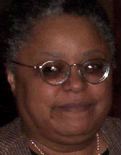 |
Paulette is still chairing the Chevy Chase Library Advisory Committee and doing as much as she can for library service. The basement at home is a pit of despair but not as big a pit as it was last year. She still has a few Appalachian dulcimer students, too. It is possible that the crazy quilt she has been working on (and off and on) for many years is inching towards completion. She is having a hard time implementing "world peace", however, and could use your help. Her domain is http://www.librariesfriend.com |
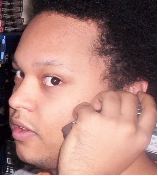 |
Merle is a second-year chemistry grad student at University of Maryland. His research involves computer models of the interactions of mercury atoms. This year Merle served as a recruiter/spokesman for the University at a major chemistry and chemical-engineering conference in Florida. Merle also attended Quake Con 2005 in Texas and returned from the road trip with an impressive collection of t-shirts. He is a new member of the Chemistry Fraternity ΑΧΣ. |
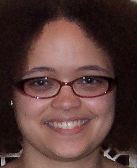 |
Gray is a sophomore music major at the University of Maryland. She plays violin in the UMD Symphony Orchestra and viola in Tesori, the Chamber Music Connections Quartet. She attended the Musicorda Chamber Music program in the summer at Mount Holyoke College in Massachusetts. Gray has been on the Dean's List for two semesters. |
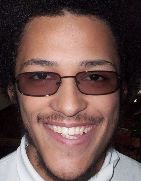 |
Robin is a rising sophomore mechanical engineering major at the University of Maryland; he is in the honors program and in Inventis, an engineering honors group. He is assistant scoutmaster for Kensington Boy Scout Troop 439, where, among other activities this year, he participated in a 50-mile hike along Shenandoah National Park segments of the Appalachian Trail. Some of Robin's drawings, poetry and general observations appear in his blog http://www.livejournal.com/users/packbat/ |
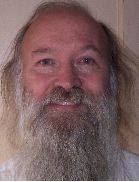 |
Mark began 2005 with a marathon, a trail marathon, and a 50k ultra, finishing all in good health — but before he could attempt a spring 50 miler he tripped in the dark in the home living-room late one March evening, caught his left big toe in a backpack strap, and tore the wayward digit half off. Tendon reattachment was successful, however, and by November Mark was able to do another marathon just as slowly as he always does. Gruesome photos of his surgery are available on http://zhurnaly.com or http://zhurnal.net along with much too much other random havering about topics such as amateur baseball or the GPS coordinates of DC Boundary Stones. |
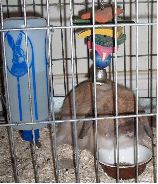 |
Flopsy the Bunny says only, "I love Raviolo brand crunchy treats — they really ring my chimes!" |
(cf. Dickerson Zimmermann 2002 (11 Feb 2003), Dickerson Zimmermann 2003 (18 Dec 2003), Dickerson Zimmermann 2004 Flip Side (22 Dec 2004), Dickerson Zimmermann 2004 (23 Dec 2004), Dickerson Zimmermann 2005 Flip Side (24 Dec 2005), ...)
- Sunday, December 25, 2005 at 00:23:41 (EST)
For those who haven't received an on-paper copy, here's a web version of the "flip side" from the Dickerson-Zimmermann family bulletin sent out with our holiday cards in 2005, written by Paulette Dickerson. See Dickerson Zimmermann 2005 for the obverse.
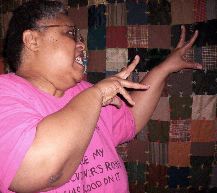 |
DIRT-Be-Gone!!! — If cleanliness is next to Godliness, then dirtiness must be next to...!?! DIRT-Be-Gone!!! uses time honored exorcistic principles to banish dirt from your house. Forever! From the folks who put the "snake" back in snake oil! |
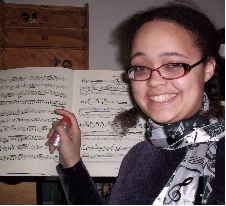 |
Fermata Fabulosa's Furiously Fast Fingerboard Formula — Need that extra zip for a virtuoso performance? Our patented silicon based formula is the answer when you have a need for speed. You'll never choke at a competition again! You'll never fumble an audition! Every solo you play will "wow them"! You move your fingers, we make them glide! [Our formula will not substitute for practice — it will eliminate the need!] |
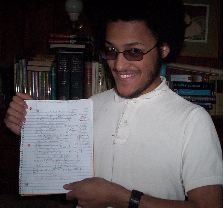 |
Rad Rob's Big Ride Study Guides, aka "The Works" — At last! Math tutorials from a REAL math tutor. You don't have the time or money for a face to face tutorial? Try our novel "face to page" method of learning and take a fast trip from a C minus to an A plus! Get "The Works"; it works!!! |
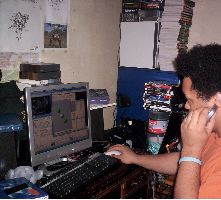 |
Merle's Magic Multi-Tasking Mental Method — Watch two DVDs with director's commentaries; rip CDs to your MP3 player; cruise the Web and Chat with fifteen buddies while you work on YOUR next term paper! With Merle's Method you can talk on the cell and "speakerphone" the landline, too! Otherwise you're just wasting time... Merle's Magic Memory DJ Mix Tape (now on CD!) included with every purchase. You, too, can "Go Mental" !!! |
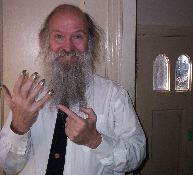 |
Tired of toenails that turn black and blue or fall off after marathon running sessions? Zig Zag Zimmermann Patented Toe Guards will put an end to that problem. They come in several finishes including matte, metallic, and glossy and in a wide array of colors including "nude". After your next long race you won't wear flip flops because it hurts — you'll wear them because your toes look soooo good. Toe Guards Good! |
 |
For those nights when a pet needs to stretch her legs, Flopsy Bunny has developed an aerobic door opening routine — Hoppy House / Healthy House / Home Runs — that's guaranteed to give any rabbit "the run of the house." |
(cf. Dickerson Zimmermann 2002 (11 Feb 2003), Dickerson Zimmermann 2003 (18 Dec 2003), Dickerson Zimmermann 2004 Flip Side (22 Dec 2004), Dickerson Zimmermann 2004 (23 Dec 2004), Dickerson Zimmermann 2005 (25 Dec 2005), ...)
- Saturday, December 24, 2005 at 07:39:10 (EST)
Recent US legislation (which shall here remain nameless since the principle applies far more widely) on occasion requires Internet service providers, banks, libraries, and so forth to provide law enforcement access to records of customer activity. A feature which has provoked much controversy and angst is a provision in the law that forbids the ISP/bank/library/etc. from even telling the customer that s/he is the target of a secret warrant.
A modest proposal: why don't ISPs (banks/libraries/...) simply send form letters every month to their users who haven't been the subject of investigations, reminding them of that simple fact? It can scarcely be wrong for anyone to say, truthfully, "I have not yet been compelled to turn over your records." (That's free speech!)
When a warrant comes in on a given customer, s/he is simply dropped from the negative-notification list. (Telling a baldfaced lie is still wrong, isn't it? Even senior government officials not under oath try to avoid lying!)
Alternatively, customers could ask their ISPs (etc.) every so often, "Have you been forced to provide my information to anyone?" — and when the answer changes from "No" to "No comment", make the appropriate deduction ...
- Friday, December 23, 2005 at 06:05:47 (EST)
| Trying to determine what is going on in the world by reading newspapers is like trying to tell the time by watching the second hand of a clock. |
— Ben Hecht (1894-1964) —
(but cf. Memorial Day (28 May 2002), Essential Newspaper (24 Mar 2005), ...)
- Wednesday, December 21, 2005 at 20:50:22 (EST)
From Sir Arthur Conan Doyle's The Adventure of Silver Blaze, perhaps the most archetypal exchange in the entire Canon:
"Is there any other point to which you would wish to draw my attention?"
"To the curious incident of the dog in the night-time."
"The dog did nothing in the night-time."
"That was the curious incident," remarked Sherlock Holmes.
(cf. Webs Of Evidence (15 Feb 2000), Absence Of Evidence (17 Mar 2003), ...)
- Monday, December 19, 2005 at 05:58:55 (EST)
Musician Scott Reiss took his own life last Wednesday. I knew Scott only indirectly; other family members saw him often, over the years, as they visited his home and studied viola da gamba with his wife, Dr. Tina Chancey. They attended a wake for Scott today. I went out on a long run in memory of him.
Many segments of the trail were covered with ice, treacherous footing on which I almost took a tumble. Scott's brain chemistry, alas, caused episodes of depression that made icy patches appear too frequently in his life. On 14 December 2005 he slipped on one and fell. He will long be missed.
(see eulogy by Tim Page, Washington Post, "Scott Reiss: In the Pipes, He Found a Calling" (17 Dec 2005); cf. Remember Rafe (11 Dec 2000), ...)
- Saturday, December 17, 2005 at 20:06:45 (EST)
Kenneth Koch (1925-2002) was a poet who reached out to the world instead of sitting back and waiting for the world to come to him. His book I Never Told Anybody: Teaching Poetry Writing in a Nursing Home (1977) documents an experiment he, Kate Farrell, and their assistants performed with a few dozen people:
The students, whom I was soon to know as individuals, seemed this first time very much alike. They seemed old, sick, tired, uncomfortable. Some seemed to be asleep or almost so. Others stared around distractedly. One or two showed signs of being in pain. Some looked at me in a pleasant friendly, if slightly puzzled, way. ...
Through a series of exercises over a period of weeks, these unlikely poets blossomed and flowered:
Our students did accomplish things. I am not sure that helped them to adjust to life in the nursing home. Rather, I think, it slightly changed the conditions of that life, which was better. I don't think I would like to adjust to a life without imagination or accomplishment, and I don't believe my students wanted to either. It is in that sense, perhaps, that it can best be understood why it is better to teach poetry writing as an art than to teach it — well, not really teach it but use it — as some form of distracting or consoling therapy. As therapy it may help someone to be a busy old person, but as art and accomplishment it can help him to be fully alive.
What this means in teaching is, first, believing that students such as ours are capable of writing poetry, and of continuing to do it and of getting better at it. It means, too, having the confidence that one can do the teaching. It is, if one is patient and can be free of some wrong ideas about old people, not terribly difficult. Our students liked poetry so much. And some were writing it fairly well after two or three classes. In the conduct of the course, it means always paying attention to the text, and especially to the esthetic qualities of the text, rather than to the person who wrote it. That is, saying, "This line is beautiful. I like the way it repeats the word green," rather than, "How wonderful that you could write that." For example, in our class, Mary L. Jackson didn't go from "I had a cat whose name was Minnie" to the lovely music and imagination of her later poems because I thought her Minnie line a "good sign" or because it made me proud, but because I talked to her, in regard to that and other lines about the music in it, the language, the humor. We were never contemplating Mary L. Jackson, she and I, but the things she said and wrote. Teaching poetry as an art meant giving her, always, opportunities to make what she said and wrote better — more inclusive, more intense, more musical. That way, she, any student, accomplishes things. Even when there were apparent setbacks, I kept that artistic, and accomplishing, aim in mind. One trouble with a kind of falsely therapeutic and always-reassuring attitude that it is easy to fall into with old people is the tendency to be satisfied with too little. I could have been "happy with" and "proud of" my students after the first class — even in that first hour, they were better at writing poems than they had ever been. How good it was to keep helping them genuinely to be better at it every time! And how much better than anything I said I felt was their being happy and proud because they wrote well.
Accomplishment was good for our students, as it is for everyone. ...
Koch believes "... that many more people like those I taught, as well as those less ill than they, are capable of writing good poems and liking it. Their ability to do so is in most cases restricted by their not knowing about poetry or by their knowing about it in the wrong way, thinking of it as something obligatorily rhyming and abstract and grandiose and far from anything that they could do well." He concludes:
These things were in our students but, I suspect, for the most part, hidden. Writing poems, they discovered them and made them into art. They were richer for that, and so, to a different degree, were those who heard their poems and read them. It was not only the details in their poems on the subject of untold secrets that our students had "never told anybody," but all that was best in all they wrote. They hadn't told anybody, and thus nobody had ever heard it, and neither they nor anyone else knew that it was in them to tell it, because they had never written poetry.
(cf. Lying Verses (15 Mar 2001), ...)
- Friday, December 16, 2005 at 22:07:58 (EST)
Sometimes the best form of charity is individual: to teach and prod and expand the universe for another person. Margaret Drabble describes how Arnold Bennett did this for a young South African lady:
Pauline Smith was a timid girl, socially self-conscious, not very strong, with aspirations and indeed a real talent as a writer, but very little self-assertion or confidence. Bennett was an ideal mentor. He had noticed her and her mother at the hotel, had talked to them, had brusquely defended Pauline's social vagueness, and had criticized her writing: he liked her children's stories, but not her projected novel. Now, in his house, she was going to be compelled to write a novel, and to make conversation. He also widened her taste in literature greatly; until then she had led a narrow and sheltered life, and he revealed to her 'the world of modern literature, in France and Russia as well as in England.' Bennett, never one himself to despise guidance or reject the revelations of others, was always keen to impart his own enthusiasms, and Pauline was an eager pupil. She says of him: 'To the end the discovery of beauty in any form was adventure to him — and adventure to be eagerly shared. In later years I never went with him to any play or art collection without being in this same way enriched. . . ' As a protégé, as well as an admirer, she was a success: her short stories, The Little Karoo, all set in the South Africa of her childhood, were widely admired and are still remembered. Bennett must have felt a justified pride in writing an introduction for the collection, in 1925, describing himself as 'the earliest wondering admirer of her strange, austere, tender and ruthless talent.'
(from Arnold Bennett: A Biography, Chapter 8, "Success"; cf. His Own Light (20 Oct 2005), ...)
- Wednesday, December 14, 2005 at 04:56:17 (EST)
| The fervid search for the big idea distracts too many people from recognizing that organizations are transformed more deeply and continuously by the relentless pursuit of small ideas. |
(from "The Little Ideas That Could" by Donald Winkler, New York Times (14 Jun 1998); cf. Common Understanding (8 Oct 1999), Buck Mantras (13 Apr 2001), Mission Statement (2 Nov 2001), Project Management Proverbs (2 Jun 2002), Fearless Leaders (27 Aug 2003), Project Management 101 (16 Jan 2005), Hare Brain Tortoise Mind (3 Jun 2005), ...)
- Monday, December 12, 2005 at 21:05:27 (EST)
This year, I'm getting it out of my system immediately. Today the Sunday New York Times magazine again offers its annual version of "What's In" trend analysis with a faux-intellectual spin — "The Year in Ideas" theme issue — and again, it's singularly lacking in real ideas. The 78 mini-features overwhelmingly focus on:
I am hard-pressed to locate any concepts that will be remembered a decade hence. Perennially, what bugs me most about "The Year in Ideas"? Overwhelmingly, the New York Times is a thoughtful, honest, useful newspaper. Here it devotes most of a major section to fluff and product promo-hype. What a pity.
Amusingly enough, a revealing typo (edit-o? HTML-o?) appears on the main Table of Contents page for the web version of the Sunday NYT magazine: amongst the index of articles is Fertile Red States — an "idea" from the 2004 issue. I've reported it; presumably it will be fixed shortly. Its presence suggests that "The Year in Ideas" is at least in format recycled annually. Oops!
(cf. Year In Ideas (16 Dec 2003), Year In Ideas 2004 (30 Dec 2004), ...)
- Sunday, December 11, 2005 at 13:23:11 (EST)
Tea connoisseur? I'm far from one, but I do on occasion like to sip a variety of greens, oolongs, and blacks. My acquaintance with the niceties of nicer teas began in grad school, when comrade student physicist Carl Caves introduced me to the incomparable Earl Grey ("Everybody likes Earl Grey!") and the smoky Lapsang Souchong ("It tastes like charred jock-strap!"). The more meditative, or maybe obsessive, ceremonial aspects of tea-making and -consuming have always fascinated me in theory; in practice I haven't devoted much time to them.
Nowadays fancy teas are ubiquitous, even in bagged form, but a few decades ago one had to search ethnic markets for imported varieties, which came as loose leaves in little canisters. Chai, an Indian spiced tea, is a newly acquired taste. And as for herbal "teas"? Mostly uninteresting ...
- Saturday, December 10, 2005 at 08:02:34 (EST)
Chemist Richard Smalley (1943-2005) is best known for his work on large molecules of beautiful structure — buckminsterfullerene and carbon nanotubes and the like — for which he shared a Nobel prize. A couple of years back he attempted to engage in a "debate" with K. Eric Drexler (of nanotechnology fame) over the real-world feasibility of molecular assemblers. The transcript of the exchange is fascinating reading, particularly in the way it illustrates a profound failure to communicate between the two participants. Smally concludes his side of the conversation with a metaphor:
I see you have now walked out of the room where I had led you to talk about real chemistry, and you are now back in your mechanical world. I am sorry we have ended up like this. For a moment I thought we were making progress.
and after some further technical discussion closes with:
But, no, you don't get it. You are still in a pretend world where atoms go where you want because your computer program directs them to go there. You assume there is a way a robotic manipulator arm can do that in a vacuum, and somehow we will work out a way to have this whole thing actually be able to make another copy of itself. I have given you reasons why such an assembler cannot be built, and will not operate, using the principles you suggest. I consider that your failure to provide a working strategy indicates that you implicitly concur—even as you explicitly deny—that the idea cannot work.
I'm rather persuaded by Smalley's arguments that the nanotech vision is simply that: a vision, a fantasy, a dream without any solid scientific foundation. That's a sad conclusion from the viewpoint of those who want magic in the world. They've spent countless hours writing countless web pages devoted to anti-Smalley rhetoric.
Many people are vulnerable to what I call the "Anthropic Fallacy". They reason: "If I can't figure out how to do it, then it can't be done!" Thus if I can't figure out how feature X evolved, then evolution must be wrong. If I can't figure out how intelligent observers could exist in a universe with different fundamental physical constants, then those constants can't be different. And so forth.
There's a converse (or inverse?) to the Anthropic Fallacy, the equally wrong "Pollyanna Principle". It goes: "If I can't figure out why it won't work, then it has to work!"' The army of nanotech enthusiasts are profoundly optimistic in their logic, as they envision a lovely clean self-replicating molecular assembler merrily chunking along, just like a program in a computer.
Smalley's argument suggests that the real world, alas, isn't so tidy — and that to get to the shiny nano-assembler one must first solve a huge number of knotty chemical problems, problems that won't go away with a few waves of the hands. Maybe there's magic out there, but discovering the spells to conjure it will take a lot of hard work.
(see Chemical & Engineering News, v. 81 n. 48 (1 Dec 2003), "Point Counterpoint: NANOTECHNOLOGY — Drexler and Smalley make the case for and against 'molecular assemblers'"; cf. Binding Energy (14 Jun 1999), Safety In Complexity (15 Apr 2000), Anti Anthropism (26 May 2000), Cosmic Chaos (14 Apr 2001), Fabulo Tech (15 May 2001), Techno Time (5 Nov 2001), ...)
- Wednesday, December 07, 2005 at 20:09:53 (EST)
| God made everything out of nothing, but the nothingness shows through. |
(Paul Valéry, originally as "Dieu a tout fait de rien. Mais le rien perce." Cf. Seeing And Forgetting (15 Jul 1999), On Somethingness (17 Jan 2000), No Concepts At All (22 Feb 2001), Approved Methods (12 Nov 2005), ...)
- Tuesday, December 06, 2005 at 06:36:26 (EST)
Provoked by excellent Chandleresquely noir prose in a comrade's recent running report (tnx, C-C!) I picked up a copy of Raymond Chandler's The Simple Art of Murder. The 1944 title essay analyzes the genre of the mystery. It includes some witty, cynical asides on the craft:
Nor is it any part of my thesis to maintain that [the detective story] is a vital and significant form of art. There are no vital and significant forms of art; there is only art, and precious little of that. The growth of populations has in no way increased that amount; it has merely increased the adeptness with which substitutes can be produced and packaged.
...
A rather revolutionary debunking of both the language and the material of fiction had been going on for some time. It probably started in poetry; almost everything does.
...
[Dashiell Hammett] had style, but his audience didn't know it, because it was in a language not supposed to be capable of such refinements. They thought they were getting a good meaty melodrama written in the kind of lingo they imagined they spoke themselves. It was, in a sense, but it was much more. All language begins with speech, and the speech of common men at that, but when it develops to the point of becoming a literary medium it only looks like speech.
...
Hammett is said to have lacked heart; yet the story he himself thought the most of is the record of a man's devotion to a friend. He was spare, frugal, hard-boiled, but he did over and over again what only the best writers can ever do at all. He wrote scenes that seemed never to have been written before.
With all this he did not wreck the formal detective story. Nobody can; production demands a form that can be produced. Realism takes too much talent, too much knowledge, too much awareness. Hammett may have loosened it up a little here, and sharpened it a little there. Certainly all but the stupidest and most meretricious writers are more conscious of their artificiality than they used to be. And he demonstrated that the detective story can be important writing. The Maltese Falcon may or may not be a work of genius, but an art which is capable of it is not "by hypothesis" incapable of anything. Once a detective story can be as good as this, only the pedants will deny that it could be even better.
And Chandler concludes:
In everything that can be called art there is a quality of redemption. It may be pure tragedy, if it is high tragedy, and it may be pity and irony, and it may be the raucous laughter of the strong man. But down these mean streets a man must go who is not himself mean, who is neither tarnished nor afraid. The detective in this kind of story must be such a man. He is the hero; he is everything. He must be a complete man and a common man and yet an unusual man. He must be, to use a rather weathered phrase, a man of honor — by instinct, by inevitability, without thought of it, and certainly without saying it. He must be the best man in his world and a good enough man for any world. I do not care much about his private life; he is neither a eunuch nor a satyr; I think he might seduce a duchess and I am quite sure he would not spoil a virgin; if he is a man of honor in one thing, he is that in all things.
He is a relatively poor man, or he would not be a detective at all. He is a common man or he could not go among common people. He has a sense of character, or he would not know his job. He will take no man's money dishonestly and no man's insolence without a due and dispassionate revenge. He is a lonely man and his pride is that you will treat him as a proud man or be very sorry you ever saw him. He talks as the man of his age talks — that is, with rude wit, a lively sense of the grotesque, a disgust for sham, and a contempt for pettiness.
The story is this man's adventure in search of a hidden truth, and it would be no adventure if it did not happen to a man fit for adventure. He has a range of awareness that startles you, but it belongs to him by right, because it belongs to the world he lives in. If there were enough like him, the world would be a very safe place to live in, without becoming too dull to be worth living in.
(cf. Mysteries Versus Secrets (23 Sep 1999), Will In The World (20 Apr 2005), ...)
- Sunday, December 04, 2005 at 11:30:17 (EST)
The cubicle denizen, defending his office space:
| Hey! You! Get out of my box! |
The chamber musician, guarding her scores:
| Hey! You! Get out of my Bachs! |
The brewers, shielding their winter-aged lagers:
| Hey! You! Get out of my bocks! |
(with apologies to the Rolling Stones; cf. Uncivil Servants (23 Aug 2000), ...)
- Saturday, December 03, 2005 at 10:57:03 (EST)
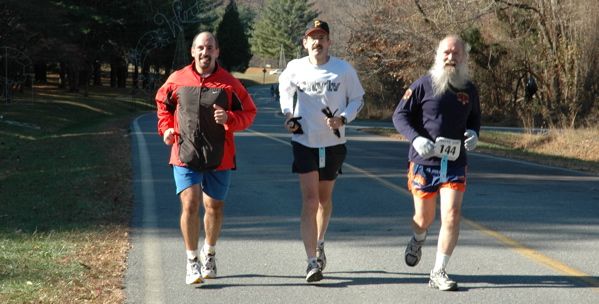
(photo by Christina Caravoulias)
A capstone to a month of unexpectedly smooth running: comrades Carl Rogers, Ken Swab, and I — aka the Three Mooseketeers — enjoy a fine ramble through the woods of Seneca Creek State Park at the MCRRC post-Thanksgiving 10 miler. This is Ken's first official venture beyond the 10k distance (not counting an 8 mile jog with me on 5 Nov), and he blitzes the hilly course. Bravo! See "Turkey Burn-off" below for details. Meanwhile, the November 2005 logbook includes:
PBT@nite
3 Nov - 7 miles, ~11:10 pace — Thursday evening, I'm early to pick up daughter from a recital, so from the UM (College Park) music center I jog a mile across campus to the Paint Branch Trail (mile post 1.5, behind an engineering building) and head north. My birthday-present LED flashlight on red-setting casts a faint but comforting glow. I hold my thumb on the white high-beam button and hit it when I get nervous. (One flash reveals a deer by the trail.) I jog to the trail endpoint near the Beltway and then turn about and retrace my path. Adrenaline in the darkness keeps me moving faster than normal.
CCT Zigzag
5 Nov - 8 miles, ~11:15 pace — Amazingly five of us manage to rendezvous at the Capital Crescent Trail in downtown Bethesda at 8am Saturday morning (though I arrive with only 30 seconds to spare). Coach Evan & his friend Mike blast southwards with Comrades Carl & Ken & me in warm pursuit. I'm on the lookout for money on the ground — last week Ken snagged a $20 bill here — but all we spy on the shoulder of the path is a discarded brassiere, which engenders some mildly risqué speculation as to how it got there.
After a blitz mile in 10:00 Carl sprints ahead to join the speedsters while Ken & I turn back; we're now at the 4.5 mile point just short of River Road. Ken hasn't seen much of the northern end of the CCT so we trek that way at a more comfortable ~11:30 pace, talking and enjoying the scenery and dodging cyclists. I demand walk breaks at every half-mile post, a strategy that works well today. When we reach the 0.5 mile marker we're assaulted by paint fumes from an adjacent auto body shop. We reverse course again and return to the start.
The upper-back regions of my arms begin to feel irritated and raw, even though there's nothing for them to chafe against since I'm wearing a no-sleeve singlet. I've felt this before (e.g., in the middle miles of the Marine Corps Marathon 2004) and can only speculate that it's related to sweat and hyper-sensitive skin. During our last mile a lovely lady with mathematically golden hip-to-waist ratio runs past. I feel rejuvinated enough to pursue and chat with her briefly, thereby achieving a final 10:45 split. After we cool down Ken takes me a couple of blocks west to the Louisiana Express where he introduces me to beignets: New Orleans hot-fried-dough pastries covered with powdered sugar. I bring a bag of them home, eat some more, and then take an hour-long nap to atone for getting up at 4:30am to do the family laundry.
Rock Creek Park Marathon & Relay
13 Nov - 26.2 miles, ~12:00 pace — See Rock Creek Park Marathon 2005 for details of this "slightly startling success", a 5 hour 13 minute stroll, my first marathon since the Spring.
Little Bennett's Revenge
20 Nov - ~3.1 miles, ~11:00 pace — This 5k blitz with comrade Ken Swab follows a pleasant set of paths through the forests of Little Bennett Regional Park. Some of the hills are a trifle rocky and tree roots across the trail are occasionally treacherous; fortunately I experience nothing worse than a partially rolled ankle at one point, scary but non-catastrophic. The course begins with a series of downhill grades which Ken and I take at a brisk pace. We've been warned of a fallen tree that blocks the path, but when we get there we discover that it's easy to duck below it and keep trotting. I carry a camera and take photos of Ken and our fellow runners. Before the start I see a man in American flag shorts bending over to retie his shoes. I ask him to re-do the pose so I can get a snapshot of the patriotic stern view. Ken is reminded of the famous reenacted Iwo Jima flag-raising image.
Near the halfway point of the out-loop-and-back there's a downed runner, a young lady holding her ankle and clearly in some pain. Ken and I pause by her for a minute, talk with her to assess her condition, and then proceed on with the promise to send help back asap. All's well eventually: after the finish we see her again, limping but mobile; there's a male casualty hobbling by in similar condition. Tricky terrain! We make up the time lost from being Samaritans and finish in a hair over 34 minutes. It's another well-managed low-key [MCRRC] race. Kudos to the organizers and volunteers!
Yankee Litter
24 Nov - 11+ miles, ~11:10 pace — I give thanks for cool (~38°F) and comfy conditions this morning as I set out at 7:30am. There's a trace of snow on the grass and a little ice on the wooden bridges over Rock Creek, but the streets and trails are only damp, not hazardous. I dither but eventually decide to leave the cap and outer windshirt behind, and as it turns out the shorts and long-sleeved knit shirt that I wear are near-optimal. A light drizzle begins a mile from home and various unmentionable regions get a bit chilly, but I persevere and soon feel warm again (or perhaps just lose sensation in the affected zones).
The clockwise NIH loop flows briskly. Georgetown Branch Trail to Bethesda is smooth; I take brief walk breaks every half mile and at road crossings. A fast trio of young ladies zip by as the trail enters the golf course. My hands get sweaty and I take the gloves off after 45 minutes. Along Old Georgetown Road the final miles of a "Turkey Chase" 10k race have been marked with traffic cones. I pick up trash from the road: a soggy New York Yankees (boo! hiss!) beanie. If anybody wants it (Brian?!) please let me know.
At the turn onto Cedar Lane I merge with a massive crowd of Turkey Chase 2-mile event walkers. After several blocks of weaving and dodging I escape the traffic and proceed to Connecticut Avenue where I wait for a gap in the hordes doing the 10k, then bolt across and continue to Rock Creek Trail. My thumbs go numb and I re-don gloves. Miles 8 and 9 are sub-10 minute blitzes (ok, 9:58 and 9:42 to be precise, on RCT miles 4.5 - 2.5). I walk and jog the hills to Walter Reed Annex and return home via Forest Glen Seminary, saluting the pulchritudinously inspirational mermaid fountain as I pass. Happy Thanksgiving, everybody!
Turkey Burn-off
26 Nov - 10 miles, ~10:40 pace — It's a chilly morning, with temperatures near the freezing point and intermittent gusty breezes. Ken gives me a ride to the park where we soon find our buddies Carl, Evan, and Tom. I take pictures of Ron ("Tarzan Boy"), Wayne ("Way-no"), and Christina ("The Incomparable", who in turn photographs us). After some soul-searching over what to wear, Ken & I make a last-minute trip to ditch outer layers in his car. The "Go!" signal is given as we're returning, so we sprint to the side of the course, wait for the dense crowd to flow by, and cut in as soon as we spy Carl. We cross the start/finish line about 20 seconds after the gun.
Our first mile rips a slightly sub-10 pace and I'm concerned that we'll burn and crash, but soon the serious slopes begin and we slow to a sustainable speed. Carl is energetic throughout the race and jogs fore-and-aft or out-and-back on side trails whenever Ken & I take walk breaks. We catch up with and salute Wanda, who remembers us well from the "Piece Of Cake" 10k race where K&^z finished within a few seconds of her exactly eight months ago in this same park. Shortly after the 52 minute mark we round the traffic cone at the halfway point, almost three minutes ahead of my most optimistic expectations.
The next five miles are surprisingly comfortable and fast, though we do slow a bit. Evan (my "Speed Coach") is on the home stretch when he catches sight of me during a walk at my mile 7 (his mile 9); he scolds me as he zips past. I attempt to sing some Christmas carols in German, but after renderings (note from note!) of "O Tannenbaum" and "Stille Nacht" I take pity on my companions and refrain from covering David Bowie's "Let's Dance" — even though it includes the apropos chorus line, "If you say 'Run', I'll run with you ...". Ken finishes his inaugural 10 miler in good style at 1:47. We eat, drink, thank the volunteers, and head homeward before we start to shiver in the suddenly-cold wind.
(cf. Hills Of Cabin John 2004 (1 May 2004), September 2005 Jog Log (30 Sep 2005), Golden Trump (16 Oct 2005), Late October 2005 Jog Log (30 Oct 2005), ...)
- Thursday, December 01, 2005 at 17:12:32 (EST)
Dr. Perri Klass, pediatrician, writes about a classic tension that thinking, working, loving human beings experience:
Here is the thing about family-and-career: it is not a problem, or an issue especially for women, or a knotty dilemma amenable to clever tips. It's just what my life is: my family and my job and some little, harder-to-classify pieces of myself, floating around the edges. I won't come to any cosmic understanding of how to do it right. I'm simply going to live it day by day and year by year, with some good moments and some bad moments. The decisions, large and small, that I make along the way won't add up to a strategy; they'll add up to who I am. And even though women rarely ask men to expound on family-and-career — maybe because we understand that for a man, this is just another name for a full, busy, everyday life — it's as true for men as it is for women that these decisions will add up to who they are.
Surely we're all past the "either-or"; that approach has been dead and gone for decades. You make your own particular mixture. I could spend all my time and energy on my children, but then I wouldn't have my job, and my life would have less meaning. Or I could spend all my time and energy on my job, but then I wouldn't have my family, and my life would have less meaning.
Making tough choices, achieving balance among competing goals — that's what growing up is all about.
(from "So Where's My Medal?" by Perri Klass, M.D., in the New England Journal of Medicine, v. 353, n. 20, pps. 2107-2109 (17 Nov 2005), as quoted in the New York Times (27 Nov 2005); cf. Bennett On Life (19 Mar 2000), Money Mechanism Meaning (15 Feb 2001), Basement Worries (15 Jun 2002), Muddling Through (21 Aug 2002), Aikido Spirit (9 Dec 2003), Social Wealth (18 May 2005), ...)
- Wednesday, November 30, 2005 at 06:02:50 (EST)
Beauty has a power all its own. Neal Stephenson's 1995 sf novel The Diamond Age offers a charming example, about a third of the way into the story:
The door opened. One of Judge Fang's constables entered the room and bowed deeply to apologize for the interruption, then stepped forward and handed the magistrate a scroll. The Judge examined the seal; it bore the chop of Dr. X.
He carried it to his office and unrolled it on his desk. It was the real thing, written on rice paper in real ink, not the mediatronic stuff.
It occurred to the Judge, before he even read this document, that he could take it to an art dealer on Nanjing Road and sell it for a year's wages. Dr. X, assuming it was really he who had brushed these chracters, was the most impressive living calligrapher whose work Judge Fang had ever seen. His hand betrayed a rigorous Confucian grounding — many decades more study than Judge Fang could ever aspire to — but upon this foundation the Doctor had developed a distinctive style, highly expressive without being sloppy. It was the hand of an elder who understood the importance of gravity above all else, and who, having first established his dignity, conveyed most of his message through nuances. Beyond that, the structure of the inscription was exactly right, a perfect balance of large characters and small, hung on the page just so, as if inviting analysis by legions of future graduate students.
Judge Fang knew that Dr. X controlled legions of criminals ranging from spankable delinquents up to international crime lords; that half of the Coastal Republic officials in Shanghai were in his pocket; that within the limited boundaries of the Celestial Kingdom, he was a figure of considerable importance, probably a blue-button Mandarin of the third or fourth rank; that his business connections ran to most of the continents and phyles of the wide world and that he had accumulated tremendous wealth. All of these things paled in comparison with the demonstration of power represented by this scroll. I can pick up a brush at any time, Dr. X was saying, and toss off a work of art that can hang on the wall beside the finest calligraphy of the Ming Dynasty.
By sending the Judge this scroll, Dr. X was laying claim to all of the heritage that Judge Fang most revered. It was like getting a letter from the Master himself. The Doctor was, in effect, pulling rank. And even though Dr. X nominally belonged to a different phyle — the Celestial Kingdom — and, here in the Coastal Republic, was nothing more than a criminal, Judge Fang could not disregard this message from him, written in this way, without abjuring everything he most respected — those principles on which he had rebuilt his own life after his career as a hoodlum in Lower Manhattan had brought him to a dead end. It was like a summons sent down through the ages from his own ancestors.
He spent a few minutes further admiring the calligraphy. Then he rolled the scroll up with great care, locked it in a drawer, and returned to the interrogation room.
(cf. Gu Ya Jia (27 Dec 2002), ...)
- Monday, November 28, 2005 at 05:53:28 (EST)
If NP in chat-talk means "No Problem", then does NP-Complete mean "no problem at all"? And does the million-dollar millennium challenge theorem P = NP mean, if true, that all problems are solvable (no problem!) if viewed from the correct perspective?
(a feeble attempt at comedy based on the mathematical/algorithmic concept of NP = "nondeterministic polynomial" problems; cf. Millennium Math (5 Dec 2002), ...)
- Saturday, November 26, 2005 at 15:21:10 (EST)
Ferdinand Mount sketches a delightful image of Sir Isaiah Berlin (1909-1997) as gentleman and conversationalist:
I was aware of Isaiah Berlin long before I saw or heard him or even read his works. My mother used to tell me how, when she was an undergraduate at Oxford in the 1930s, he would take her out and dazzle her with talk of a sweep and brilliance she had never heard at her school for the daughters of indigent clergymen, then with exquisite courtesy walk her back to the gates of Somerville College. The next morning there in her pigeonhole would be a beautiful little note dated All Souls, 2:30 a.m., recalling and continuing the conversation and giving thanks for the evening. It was as if the talk had never stopped through the night, as indeed it did not on one legendary occasion with the Russian poet Anna Akhmatova, who did not have to be back in college by 10 o'clock.
So before I knew anything of Isaiah the scholar, the historian, the teacher, I knew of Isaiah the enchanter. When he died in November, just short of his 90th birthday, he was as much mourned in New York and Washington and in Jerusalem and Moscow as he was in London and Oxford, for he was not only, in Noel Annan's term, a magus, he was a magus who had left behind him devotees in almost every great Western city. When he bustled up the aisle of the Oxford lecture room, black and compact with energy like a crow about to take off, his gown seemed to rustle with priestly authority and the torrents of eloquence that were about to deluge us to derive from some Pentecostal gift. In no time, the fusillades of subordinate clauses, the cluster bombs of adjectives, the ack-ack of hypothetical questions battered us into submission. For the remaining 50 minutes we were his, and after he had bustled out again with an abruptness that never failed to startle me, we stumbled out after him onto High Street, dazed and happy.
It reminds me of Stephen Greenblatt's description (Will In The World, 20 Apr 2005) of Shakespearean language: "... like the dream of what ordinary speech would be like were human beings something greater than they are ...".
(from "The Two-eyed King", a review by Ferdinand Mount of The Proper Study of Mankind: An Anthology of Essays by Isaiah Berlin, in the Los Angeles Times (30 Aug 1998); cf. Foxy Fables (23 Apr 2002), ...)
- Thursday, November 24, 2005 at 12:56:11 (EST)
Alan Schwarz's book The Numbers Game: Baseball's Lifelong Fascination with Statistics is an entertaining, though at times self-contradictory, history of the mathematical side of the American national pastime. Particularly resonant are sections that discuss early (pre-computer era) simulations of the sport. I never played the dice-based "Strat-O-matic Baseball" (1961), but I remember many enjoyable pre-teen hours with its flick-the-pointer predecessor "All-Star Baseball". As Schwarz describes it:
... All-Star Baseball gave each major league player a disk whose circumference was divided into segments that, when placed under a spinner that came to a stop like a roulette ball, would mimic the real-life skills of the player. If Joe DiMaggio hit doubles 10 percent of the time and walked 4 percent of the time, then the appropriate slice of circumference was laid out accordingly. Kids marveled at the large home run areas for sluggers like Ralph Kiner and Hank Greenberg. They watched in suspense as the spinner neared those longballs, which were, of course, tantalizingly sandwiched in between "flyout" and "strikeout". Each spring a new set of cards came out reflecting the statistics from the previous season. ...
Schwarz also offers good reviews of baseball's early quantitative analysts and the relative strengths (and weaknesses) of their work. And he presents arguments, both pro and con, on the still-relevant conundrum of when to "alter history" by revising certain carved-in-stone records. How much of a change in the rules (or other contexts of the game) are necessary before old and new become truly incomparable? There's no single "right" answer — but that doesn't make it any less fun to debate.
Sure, The Numbers Game could have been more consistent in its criticism of bad baseball math; it could have included more equations and applied more tests of statistical significance before telling just-so stories. But as a history book it's quite good, and as an introduction to some fascinating challenges of practical decision-making it shines.
(cf. Total Immunity (24 Oct 2005), ...)
- Tuesday, November 22, 2005 at 05:44:46 (EST)
For back issues of the ^zhurnal see Volumes v.01 (April-May 1999), v.02 (May-July 1999), v.03 (July-September 1999), v.04 (September-November 1999), v.05 (November 1999 - January 2000), v.06 (January-March 2000), v.07 (March-May 2000), v.08 (May-June 2000), v.09 (June-July 2000), v.10 (August-October 2000), v.11 (October-December 2000), v.12 (December 2000 - February 2001), v.13 (February-April 2001), v.14 (April-June 2001), 0.15 (June-August 2001), 0.16 (August-September 2001), 0.17 (September-November 2001), 0.18 (November-December 2001), 0.19 (December 2001 - February 2002), 0.20 (February-April 2002), 0.21 (April-May 2002), 0.22 (May-July 2002), 0.23 (July-September 2002), 0.24 (September-October 2002), 0.25 (October-November 2002), 0.26 (November 2002 - January 2003), 0.27 (January-February 2003), 0.28 (February-April 2003), 0.29 (April-June 2003), 0.30 (June-July 2003), 0.31 (July-September 2003), 0.32 (September-October 2003), 0.33 (October-November 2003), 0.34 (November 2003 - January 2004), 0.35 (January-February 2004), 0.36 (February-March 2004), 0.37 (March-April 2004), 0.38 (April-June 2004), 0.39 (June-July 2004), 0.40 (July-August 2004), 0.41 (August-September 2004), 0.42 (September-November 2004), 0.43 (November-December 2004), 0.44 (December 2004 - February 2005), 0.45 (February-March 2005), 0.46 (March-May 2005), 0.47 (May-June 2005), 0.48 (June-August 2005), 0.49 (August-September 2005), 0.50 (September-November 2005), 0.51 (November 2005 - January 2006), 0.52 (January-February 2006), 0.53 (February-April 2006), 0.54 (April-June 2006), 0.55 (June-July 2006), 0.56 (July-September 2006), 0.57 (September-November 2006), 0.58 (November-December 2006), 0.59 (December 2006 - February 2007), 0.60 (February-April 2007), ... Current Volume. Send comments and suggestions to z (at) his.com. Thank you! (Copyright © 1999-2006 by Mark Zimmermann.)